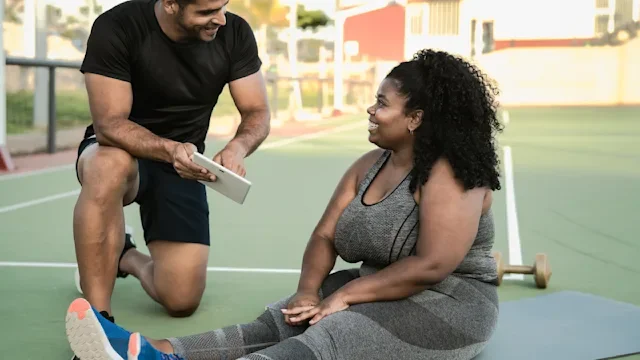Key takeaways:
Swimming provides a total-body workout that can improve your heart and lung health.
The water sport may also boost your mood and improve cognitive function.
It’s a low-impact option that can be safe for people with various conditions. But you should check with a healthcare professional before you hop in the pool.
There are many reasons why swimming is a favorite U.S. pastime. Many swimmers will tell you that there's nothing better than jumping in a pool or wading in the ocean on a hot day. But the advantages don't stop at fun. The water sport can boost your physical and mental health too.
Getting regular exercise is one of the best things you can do for your health. And these research-backed benefits of swimming might make you want to hit the water sooner rather than later.
1. Increases strength and endurance
From the breaststroke to the backstroke, swimming engages multiple muscle groups. The total-body workout can help you achieve various fitness goals. One research article looked at the health benefits of swimming in a small group of middle-aged women. After 3 months, the women who swam three times a week had better endurance, strength, and flexibility.
Search and compare options
2. Improves heart and lung health
It's no surprise that a whole-body aerobic workout is good for your heart and lungs. Swimming requires controlled breathing, which trains your body to use oxygen efficiently. That may explain why researchers found that swimmers have better lung function than football players. According to another study, swimming may be slightly better for lung health than yoga.
Regular swimming has been shown to reduce blood pressure and arterial stiffness. And these improvements in heart health may help you live longer. One study (of male participants) found that swimmers had a lower risk of death from all causes when compared to runners, walkers, and sedentary people.
3. Supports weight loss
Anyone who's splashed around a pool for an hour can tell you that swimming burns significant calories. The efficient workout can help you lose weight or maintain your weight (which looks different for everyone). A review of multiple studies looked at the effects of swimming across different groups of people. It found that swimmers had lower body mass and lower body fat percentage.
In a small study of previously inactive women, short bursts of high-intensity swimming improved insulin sensitivity and blood sugar control. Higher insulin sensitivity may make it easier to lose visceral fat, lowering the risk of Type 2 diabetes and cardiovascular disease.
4. Supports mental health
The benefits of swimming may extend to your mental and emotional health too. In one study, a single swimming workout helped women improve their mood. In another small study, water-based exercise helped people with moderate to severe dementia. Researchers noted improvements in their behavior and psychological well-being.
Overall, research suggests that most mental health benefits come from being consistent and swimming at a moderate-to-high level of intensity.
Swimming vs. running: Learn about the benefits of each and whether one is better than the other.
New to swimming? Try these four swim workouts for beginners.
Stay safe while swimming: These water safety tips are important for all skill levels.
5. Boosts brain health
According to research, exercise (including swimming) may keep your brain healthy as you age. More research is needed to fully evaluate the effects of swimming. But small studies have linked swimming with better cognitive function, reaction times, and hand-eye coordination in older adults.
6. Provides a low-impact workout
As the name suggests, high-impact exercises –– like jumping jacks or squat jumps –– put more impact on your joints. In contrast, swimming provides a low-impact workout. This may make it safer and more effective for many people, especially those with chronic pain conditions like arthritis.
For example, people with osteoarthritis experienced less pain and stiffness and improved function when they swam regularly. A 20-week aquatic exercise program was beneficial for people with multiple sclerosis. They saw improvements in symptoms such as fatigue, muscle spasms, and depression.
Read more like this
Explore these related articles, suggested for readers like you.
There’s some controversy over the effects of swimming on bone health. Higher-impact exercises get most of the credit for improving bone health. Swimming may affect different parts of the skeleton differently. But it doesn’t have negative effects on bone health. So, if you’re concerned about maintaining bone strength, consider adding high-impact or resistance training to your swimming routine.
7. Offers a safe option for pregnant people
According to the American College of Obstetricians and Gynecologists, swimming is one of the safest exercises during pregnancy. It targets multiple muscle groups while the water supports your weight. This can help you avoid injury or muscle strain as your body grows and changes during pregnancy.
Research suggests swimming can help stabilize weight and blood sugar levels during pregnancy, which are important for both you and your baby. But as with any new exercise, it's important to talk to a healthcare professional first.
8. Helps with active recovery
Many athletes know that it's helpful to keep moving, even on non-training days. Active recovery involves low-impact exercise on rest days. It allows you to stay active while replenishing muscles you've recently worked in higher-intensity workouts.
Swimming is a great active recovery workout. It may help treat and prevent muscle damage and soreness after high-intensity exercise. And some research indicates that it may even boost athletic performance. In a small study, triathletes completed a high-intensity interval training (HIIT) workout. Some of them took the next day off, while others went for a swim. The athletes who went swimming were able to run longer the following day.
9. Can be a social experience
Exercise tends to be more enjoyable when you do it with others. So, it’s no surprise that people report working out more when they do it in a group. If swimming alone doesn’t appeal to you, consider bringing a friend or two along. While the act of swimming doesn’t depend on other participants, doing it with others can bring a social aspect. And maybe having a swimming buddy can help keep you accountable, if you need a nudge now and then to exercise.
How to start swimming
Swimming for exercise might feel daunting if you don’t know how to swim. But it’s never too late to learn. Many organizations, such as the American Red Cross and YMCA, offer swim lessons for adults. Don’t start swimming until you’re water competent.
Once you get going, consider adding these swim workouts for beginners to your routine. If swimming isn’t for you, you can still consider other types of water exercise. This might include aqua jogging or simply walking in the water against resistance. Most community pools have water aerobics or similar fitness classes for all ages.
However you choose to spend your time in the water, be sure to practice water safety. This means you should:
Never swim alone
Never swim under the influence
Stay in designated swimming areas
Avoid diving in shallow areas
Know your limits
Frequently asked questions
Yes, it can. Swimming works many muscles in the body. So, with repetition, you can expect those muscles to get toned.
It depends on your fitness level and goals. For example, if you’re a triathlete capable of high endurance, a “good” workout for you will be more intense and longer. If you’re just starting out, you might not be able to tolerate as much. When in doubt, ask a professional for help. Always listen to your body, and never swim alone.
Calorie burn depends on several factors, including stroke, intensity, and duration. The harder and longer you work, the more calories you’ll burn. It also depends on your body composition. For example, a 120 lbs person can burn 180 calories swimming for 30 minutes. A 185 lbs person would burn about 250 calories over the same time period.
Yes, it can. Swimming works many muscles in the body. So, with repetition, you can expect those muscles to get toned.
It depends on your fitness level and goals. For example, if you’re a triathlete capable of high endurance, a “good” workout for you will be more intense and longer. If you’re just starting out, you might not be able to tolerate as much. When in doubt, ask a professional for help. Always listen to your body, and never swim alone.
Calorie burn depends on several factors, including stroke, intensity, and duration. The harder and longer you work, the more calories you’ll burn. It also depends on your body composition. For example, a 120 lbs person can burn 180 calories swimming for 30 minutes. A 185 lbs person would burn about 250 calories over the same time period.
The bottom line
Swimming is a safe and effective option for many people. And it may even have some unique benefits for both your mental and physical health, like improved cardiovascular fitness, mood, and cognitive function. It’s a particularly good choice for people who need a low-impact workout, like people with arthritis or those who are pregnant. So, once a healthcare professional says it’s OK, you'll be ready to hop into the pool.

Why trust our experts?



References
Abou-Dest, A., et al. (2012). Swimming as a positive moderator of cognitive aging: A cross-sectional study with a multitask approach. Journal of Aging Research.
Alkatan, M., et al. (2016). Improved function and reduced pain after swimming and cycling training in patients with osteoarthritis. The Journal of Rheumatology.
American College of Obstetricians and Gynecologists. (2024). Exercise during pregnancy.
American Red Cross. (2015). What is water competency? [video]. YouTube.
Cancela-Carral, J. M., et al. (2022). Therapeutic aquatic exercise in pregnancy: A systematic review and meta-analysis. Journal of Clinical Medicine.
Castro-Sánchez, A. M., et al. (2011). Hydrotherapy for the treatment of pain in people with multiple sclerosis: A randomized controlled trial. Evidence-Based Complementary and Alternative Medicine.
Chase, N. L., et al. (2008). Swimming and all-cause mortality risk compared with running, walking, and sedentary habits in men. International Journal of Aquatic Research and Education.
Connolly, L. J., et al. (2016). Low-volume high-intensity swim training is superior to high-volume low-intensity training in relation to insulin sensitivity and glucose control in inactive middle-aged women. European Journal of Applied Physiology.
Davis, A. J., et al. (2021). Social reward and support effects on exercise experiences and performance: Evidence from parkrun. PLoS One.
Freitas, L., et al. (2024). Does swimming exercise impair bone health? A systematic review and meta-analysis comparing the evidence in humans and rodent models. Sports Medicine.
Golaszewski, N. M., et al. (2021). Group exercise membership is associated with forms of social support, exercise identity, and amount of physical activity. International Journal of Sport and Exercise Physiology.
Gupta, S. S., et al. (2012). A comparative study of the effects of yoga and swimming on pulmonary functions in sedentary subjects. International Journal of Yoga.
Harvard Health Publishing. (2021). Calories burned in 30 minutes for people of three different weights.
Hsu, H. C., et al. (2010). Effects of swimming on eye hand coordination and balance in the elderly. The Journal of Nutrition, Health & Aging.
Jackson, M., et al. (2022). Aquatic exercise and mental health: A scoping review. Complementary Therapies in Medicine.
Kullman, S., et al. (2020). Brain insulin sensitivity is linked to adiposity and body fat distribution. Nature Communications.
Lahart, I. M., et al. (2018). Chronic physiological effects of swim training interventions in non-elite swimmers: A systematic review and meta-analysis. Sports Medicine.
Lazonic-Popovic, B.,et al. (2016). Superior lung capacity in swimmers: Some questions, more answers!. Revista Portuguesa de Pneumologia (English Edition).
Lee, B. A., et al. (2015). Effect of regular swimming exercise on the physical composition, strength, and blood lipid of middle-aged women. Journal of Exercise Rehabilitation.
Lum, D., et al. (2010). Effects of a recovery swim on subsequent running performance. International Journal of Sports Medicine.
Manaye, S., et al. (2023). The role of high-intensity and high-impact exercises in improving bone health in postmenopausal women: A systematic review. Cureus.
Netz, Y., et al. (2003). Mood alterations in mindful versus aerobic exercise modes. Journal of Psychology.
Neville, C., et al. (2014). Exploring the effect of aquatic exercise on behaviour and psychological well-being in people with moderate to severe dementia: A pilot study of the Watermemories Swimming Club. Australasian Journal on Ageing.
Serra, L., et al. (2022). Walking, running, swimming: An analysis of the effects of land and water aerobic exercises on cognitive functions and neural substrates. International Journal Environmental Research and Public Health.
Torres-Ronda, L., et al. (2014). The properties of water and their applications for training. Journal of Human Kinetics.
Wong, A., et al. (2019). The effects of swimming training on arterial function, muscular strength, and cardiorespiratory capacity in postmenopausal women with stage 2 hypertension. Menopause.
Yuan, W. X., et al. (2016). Effects of 8-week swimming training on carotid arterial stiffness and hemodynamics in young overweight adults. BioMedical Engineering OnLine.















